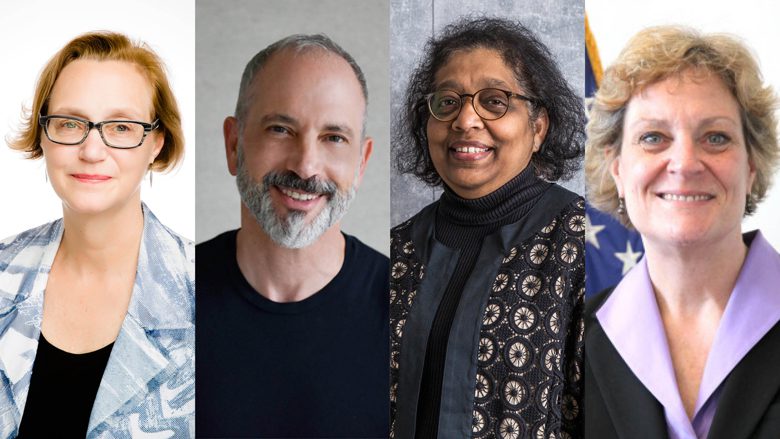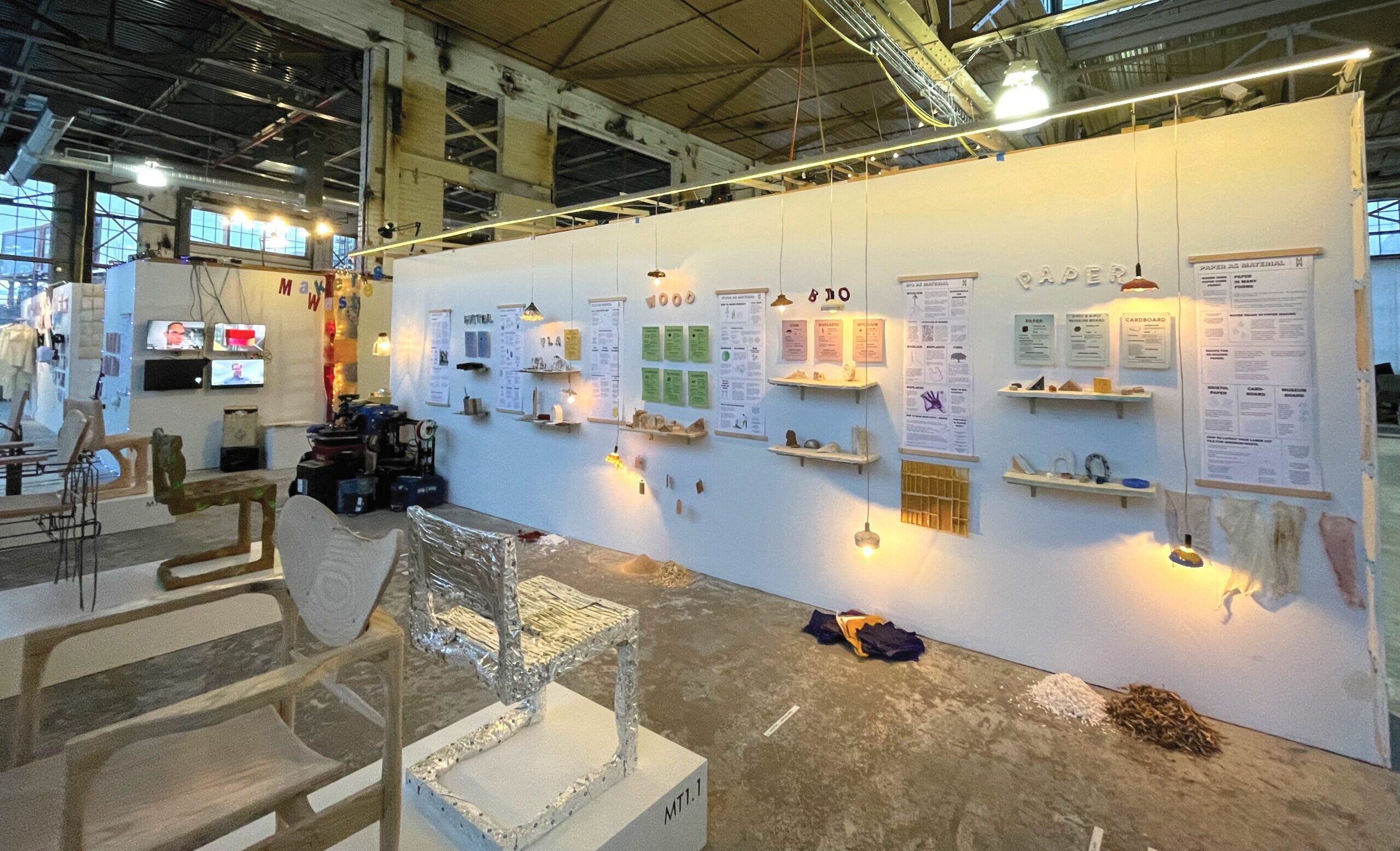Four Taubman College alumni were elected to the College of Fellows of the American Institute of Architects (AIA) recently. Election to the College of Fellows is the AIA’s highest membership honor and is granted to individuals who embody excellence in the professions and make outstanding contributions to the professions and society. The 2021 honorees are Karen Fairbanks, B.S. ’81; Umayal Ramanathan, M.Arch ’87; James Simeo, B.S. ’83; and Laura Stagner, M.Arch/M.S.E. ’86.
Karen Fairbanks, B.S. ’81
Fairbanks is a founding partner of Marble Fairbanks Architects where she has focused on the design and planning for both public and private educational and cultural clients. She is recognized as a leader in current library design, speaking on panels and presentations on library design around the world and participating as a member and past chair of the American Libraries Association Buildings for College and University Libraries Committee. Fairbanks has been an active member of the AIA, serving on the board of directors of the New York Chapter and on the exhibition and scholarship committees, as well as co-chairing the NYC AIA Design Awards Committee. Throughout the development of her practice, Fairbanks has simultaneously built the architecture department at Barnard College, where she is the Claire Tow Chair Professor of Professional Practice and chair of the department. As department chair, she oversaw the merger of the Barnard and Columbia architecture programs, developed the current department curriculum, significantly expanded the faculty, and has taught and mentored students throughout her 30 years at Barnard College and Columbia University. Additionally, she has been instrumental in the capital planning of the campus, and she brings this extensive knowledge of institutional organizations and the specific needs of academic clients to the work of Marble Fairbanks. Fairbanks received the 2013 Distinguished Alumna Award from Taubman College. She also received the Oculus Award from the Beverly Willis Foundation in 2018 and was named Educator of the Year by the AIA New York State in 2015.
“My journey to this point began at the University of Michigan, where I transferred into the architecture program with a limited understanding of where that choice would lead me. I quickly developed a passion for architecture, and U-M continued to play a significant role throughout my career. Returning to Taubman as the Charles and Ray Eames Lecturer, teaching there as the Max Fisher Visiting Fellow, and in 2013 being honored with the Distinguished Alumna Award have all been career-changing moments,” said Fairbanks.
Umayal Ramanathan, M.Arch ’87
Ramanathan, a principal in the Boston office of Shepley Bulfinch, has created forward-thinking environments for patients, clients, and staff for nearly 30 years. She is a pioneer of modern planning that meets today’s needs while anticipating how healthcare will grow and change. Her conviction and focus on the future permits clients to make bold decisions and support design moves that impact their surrounding communities and change the potential of care delivery with a commitment to improve process and practice. As a leader and mentor, Ramanathan is cognizant of her team’s potential and looks for opportunities to support and further their experiences. As a woman and minority in two male-dominated industries — architecture and health care — Ramanathan’s balance of willfulness and respect are beacons of progress. She uses her role as a leader to connect with some of the most advanced clinical practitioners and seeks common ground in forward thinking areas of practice. She encourages everyone she works with to think differently and takes advantage of occasions to reconsider, change, and improve care delivery at every turn. Ramanathan’s power to forge and maintain longstanding relationships with consistency and depth is also evident in her philanthropic work to advance the profession. Her service to health care and design organizations, academic institutions, national and international conferences, and her Indian community reinforces the breadth of her impact on future generations.
James Simeo, B.S. ’83
Simeo is a principal at CO Architects, based in Los Angeles. For more than 25 years, he has directed the planning and design of institutional projects spanning science and technology, workplace, civic, government, and higher education buildings in California and across the country. His use of uniquely inclusive programming processes and integrated, cooperative project delivery methods encourages collaboration between a cross-section of voices, producing buildings exceptionally suited to serve diverse communities. A member of the firm since 1993, Simeo has led award-winning projects in 12 states for clients that include UC Santa Cruz, UCLA, UC Riverside, Michigan State University, Northern Kentucky University, Hackensack Meridian School of Medicine, the California Department of General Services and the Judicial Council of California. His benchmark science and technology facilities crack open traditional hierarchies to foster diversity and collaboration in adaptable, interactive, and transdisciplinary spaces using a uniquely inclusive programming process and integrated, cooperative project delivery.
Laura Stagner, M.Arch/M.S.E. ’86
Stagner is the retired assistant commissioner for the Office of Project Delivery (OPD), part of the Office of Design and Construction for the U.S. General Services Administration (GSA). In this role, she led the successful consolidation of project management functions that were distributed throughout GSA into the OPD, evolving an organization that was responsible for capital projects into an organization that is now responsible for all projects, including capital, small, and reimbursable. She strengthened GSA’s stewardship of 354 million square feet of real estate in more than 2,000 communities nationwide, for a capital construction program that averaged $10 billion work in progress per year. Stagner led GSA’s issuance of the Design-Build/Design Excellence policy, updated project management and cost management policy, and expanded the project manager training and certification programs, positioning GSA as the federal leader in project delivery innovation. Projects for which Stagner had a major leadership role have received more than 30 design and project delivery and construction awards. She also was a leader within GSA’s response to the American Recovery and Reinvestment Act of 2009, leveraging that investment opportunity to improve building performance, reduce use of fossil fuels, ensure design quality, and promote innovative, integrated designer-forward project delivery strategies. She is the chair of the AIA Project Delivery Knowledge Committee and serves as a non-executive director on the national board of Design Build Institute of America. She also has served as a non-executive director on the national board of the Construction Management Association of America.
“I credit my U-M education for laying the foundation for what turned out to be my most significant career achievement: transforming federal project delivery practices at the U.S. General Services Administration from traditional, and highly litigious, project delivery methods to integrated, collaborative, designer-forward project delivery practices that optimize results through all phases of design and construction, and lead to successful outcomes and high-level team performance,” said Stagner.





